Description
The Use of Pelletized Asphalt Rubber as an Alternative to the Wet Process Blending System
Serji Amirkhanian, Ph.D.
ABSTRACT. This paper will summarize the process of producing and utilizing the pelletized asphalt rubber products. The pellets are a combination of virgin binder (e.g., PG 64-22), crumb rubber (e.g., -20 mesh size), and some chemicals. Three field case studies of projects in South Africa, Netherlands, and Kuwait that have used pelletized asphalt (bitumen) as an alternative to the traditional field blended “wet process” for producing Asphalt Rubber (AR) Hot Mix Asphalt (HMA) will be discussed in detail. The laboratory analysis of these materials will be described. The results have shown that these binders satisfy the requirements of many state agencies in USA and compare very well with the performance based binders used regularly around the world. The case studies focus on performance in terms of field project reviews and laboratory performance tests of the pelletized AR HMA as compared to historical performance data of wet process produced AR HMA. For these projects, all mix designs satisfied the Agency required specifications set forth by local governmental entities. The advantages of the utilization of these materials will be discussed. The mix design of these mixtures (projects) will be covered. The production process at the asphalt plant and the quality control and quality assurance of the projects will be discussed. The paving process and filed applications of these pellets will be covered. The energy savings and the carbon footprint of this concept will be analyzed. Several factors such as the energy need to produce the materials and the savings in energy in the production process will be analyzed. For instance, by utilizing the pellets on a paving project, there will not be any need for having the heated, and sometimes agitated, binder tank. This has proven to be a major savings in energy; therefore, a reduction in cost production of the mixture. The results will be compared to other processes (e.g., wet process, SBS binder, etc.). The paper will also discuss the cost issues and the savings involved with using these products. The results, in general, indicate that a proper mix design, satisfying the various specifications, could be accomplished. In addition, there were no issues in producing the mix in the asphalt plant. There are no needs for special equipment or modifying the plant for producing the mix or paving in the field. The details of the production process and the field experiences during these projects will be reported.
KEYWORDS: asphalt rubber, rubberized asphalt, pelletized bitumen.

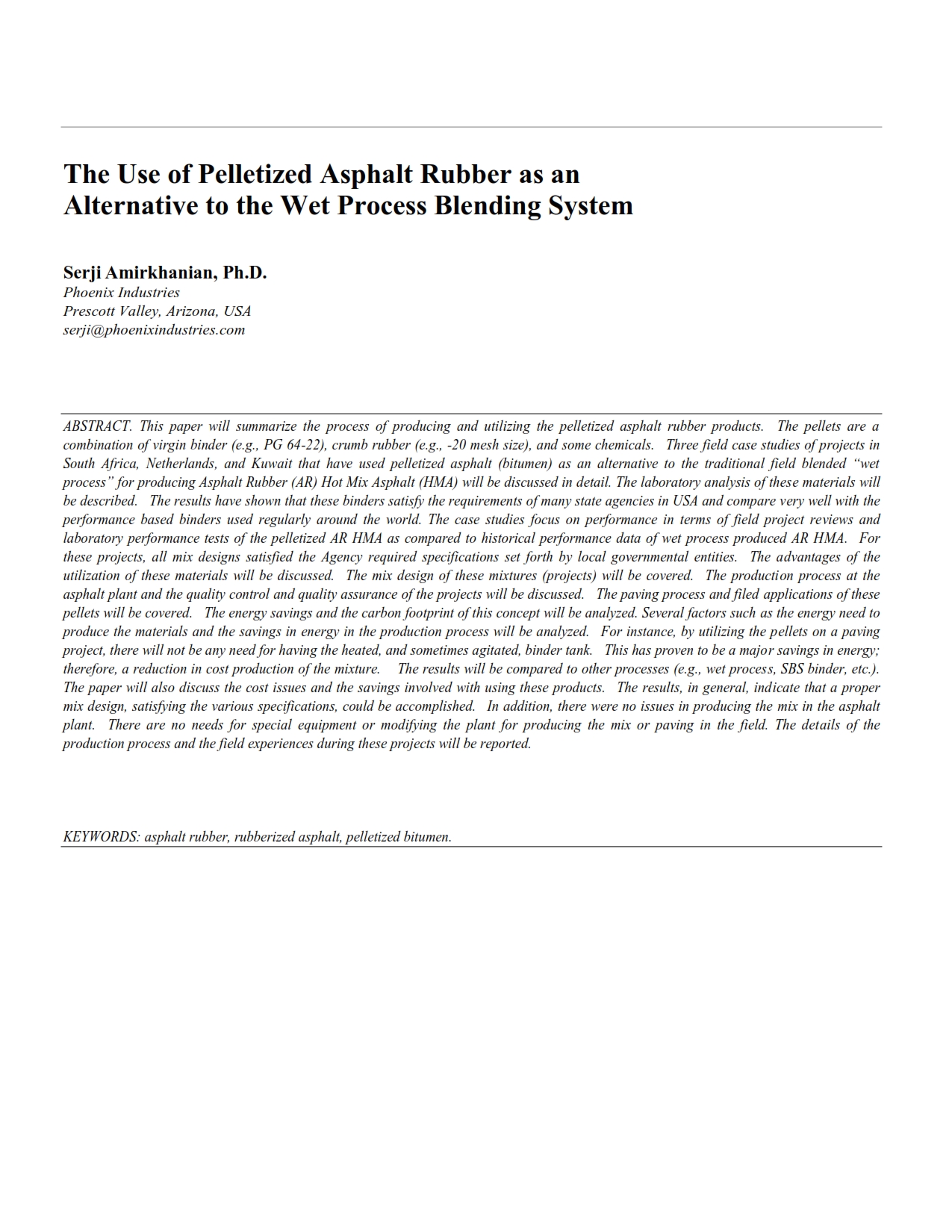
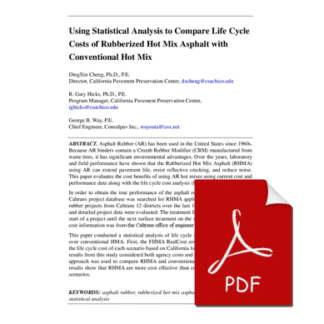
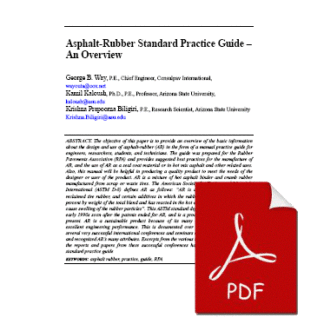
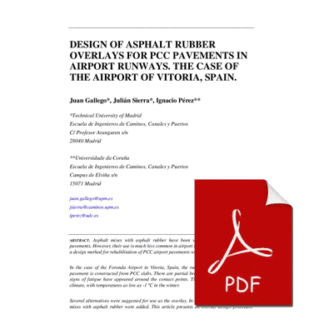


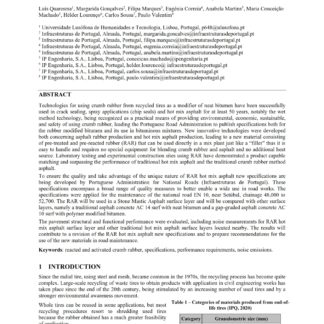
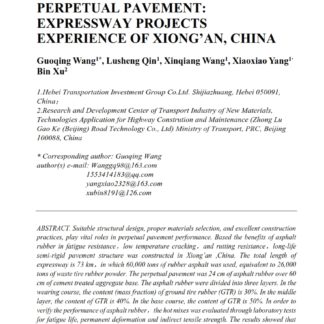
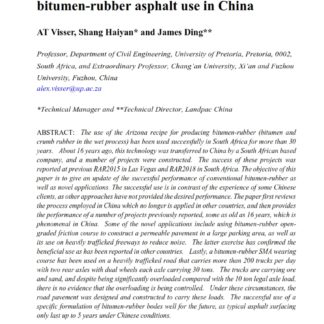
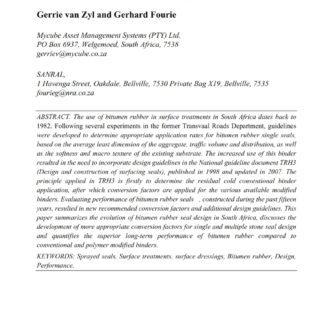
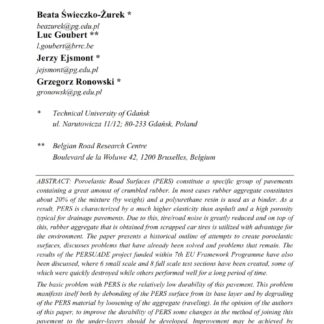
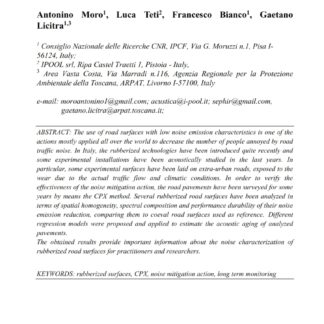
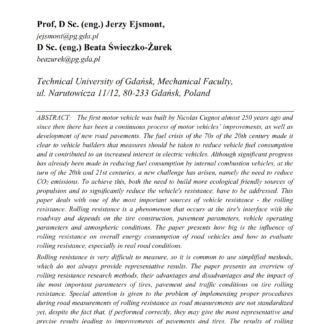
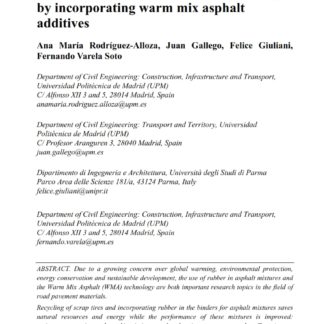
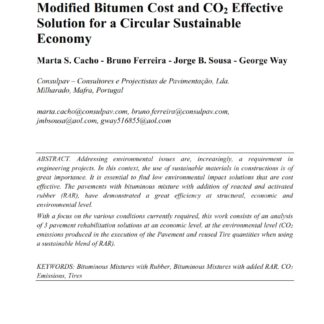
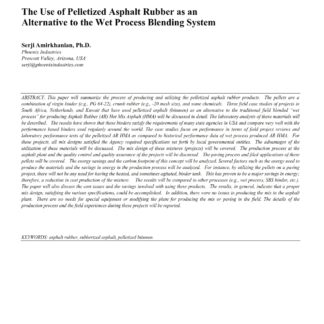
Reviews
There are no reviews yet.